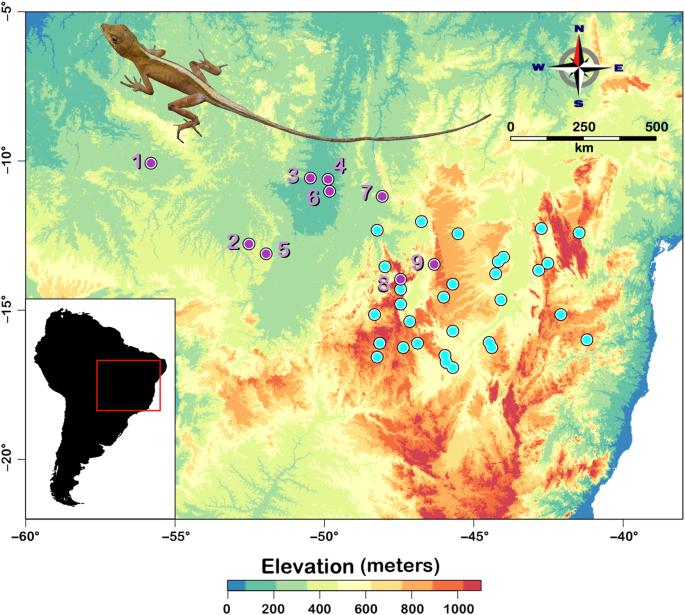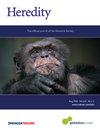新热带蜥蜴 Norops brasiliensis(Squamata: Dactyloidae)的基因结构和景观对基因流动的影响
IF 3.1
2区 生物学
Q2 ECOLOGY
引用次数: 0
摘要
进化生物学的一个重要研究目标是了解遗传变异的起源和维持。在主要位于巴西中部高原的南美洲热带稀树草原塞拉多(Cerrado),人们提出了许多假设来解释地貌特征(如地理距离、河流障碍、地形分隔和历史气候波动)如何通过介导基因流动来促进遗传结构。在此,我们探讨了这些地貌特征是否影响了蜥蜴物种 Norops brasiliensis(有鳞目:Dactyloidae)的遗传结构和分化。为了实现我们的目标,我们使用了遗传聚类分析和有效迁移面估计来评估重点物种的遗传结构。然后,我们使用优化的阻力隔离模型和基于模拟的方法,结合机器学习(卷积神经网络;CNN),通过 12 个独特的景观模型来推断当前和历史对种群遗传结构的影响。我们恢复了五个地理分布的种群,它们被基因流动低于预期的区域分隔开来。CNN 的结果表明,地理距离是预测 N. brasiliensis 遗传变异的唯一因素,而坡度、河流和历史气候对基因流动没有明显影响。我们的新型 CNN 方法能准确(89.5%)地区分每种景观模型。在景观遗传学研究中,CNN 和其他机器学习方法在很大程度上仍未被探索,但随着基因组数据集的日益普及,它们将成为未来研究的重要途径。本文章由计算机程序翻译,如有差异,请以英文原文为准。

Genetic structure and landscape effects on gene flow in the Neotropical lizard Norops brasiliensis (Squamata: Dactyloidae)
One key research goal of evolutionary biology is to understand the origin and maintenance of genetic variation. In the Cerrado, the South American savanna located primarily in the Central Brazilian Plateau, many hypotheses have been proposed to explain how landscape features (e.g., geographic distance, river barriers, topographic compartmentalization, and historical climatic fluctuations) have promoted genetic structure by mediating gene flow. Here, we asked whether these landscape features have influenced the genetic structure and differentiation in the lizard species Norops brasiliensis (Squamata: Dactyloidae). To achieve our goal, we used a genetic clustering analysis and estimate an effective migration surface to assess genetic structure in the focal species. Optimized isolation-by-resistance models and a simulation-based approach combined with machine learning (convolutional neural network; CNN) were then used to infer current and historical effects on population genetic structure through 12 unique landscape models. We recovered five geographically distributed populations that are separated by regions of lower-than-expected gene flow. The results of the CNN showed that geographic distance is the sole predictor of genetic variation in N. brasiliensis, and that slope, rivers, and historical climate had no discernible influence on gene flow. Our novel CNN approach was accurate (89.5%) in differentiating each landscape model. CNN and other machine learning approaches are still largely unexplored in landscape genetics studies, representing promising avenues for future research with increasingly accessible genomic datasets.
求助全文
通过发布文献求助,成功后即可免费获取论文全文。
去求助
来源期刊

Heredity
生物-进化生物学
CiteScore
7.50
自引率
2.60%
发文量
84
审稿时长
4-8 weeks
期刊介绍:
Heredity is the official journal of the Genetics Society. It covers a broad range of topics within the field of genetics and therefore papers must address conceptual or applied issues of interest to the journal''s wide readership
 求助内容:
求助内容: 应助结果提醒方式:
应助结果提醒方式:


